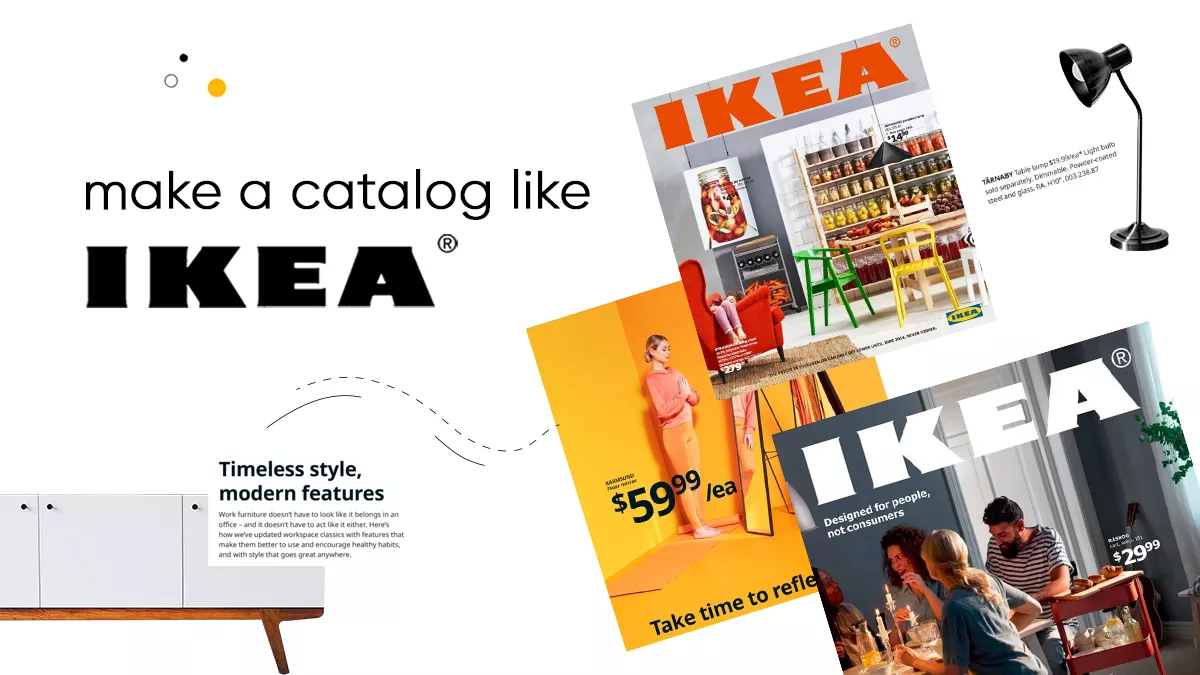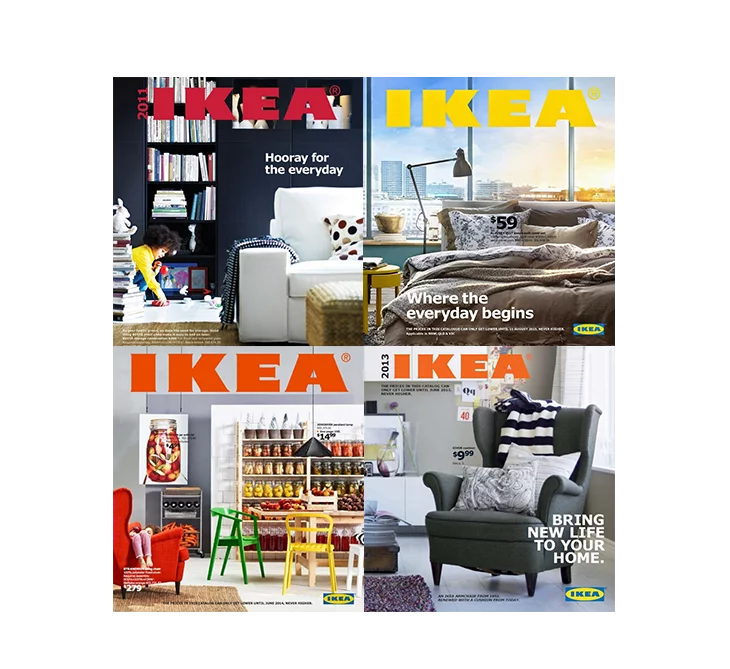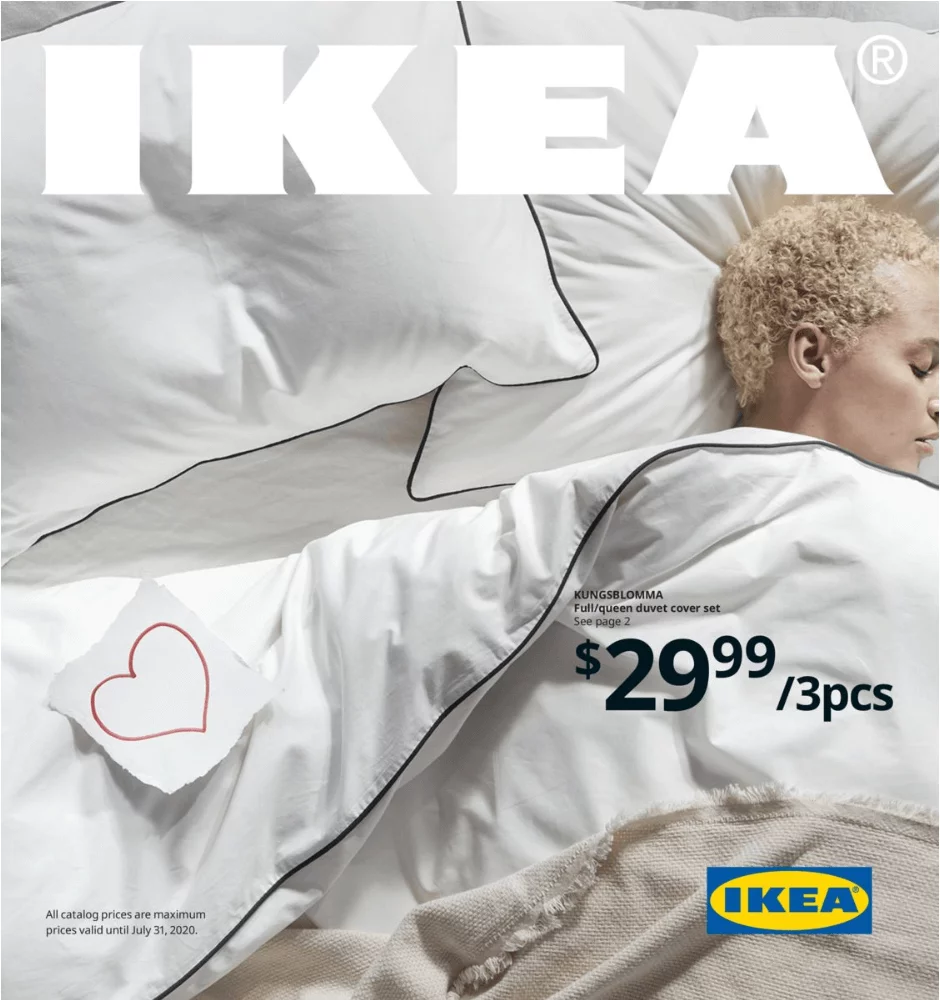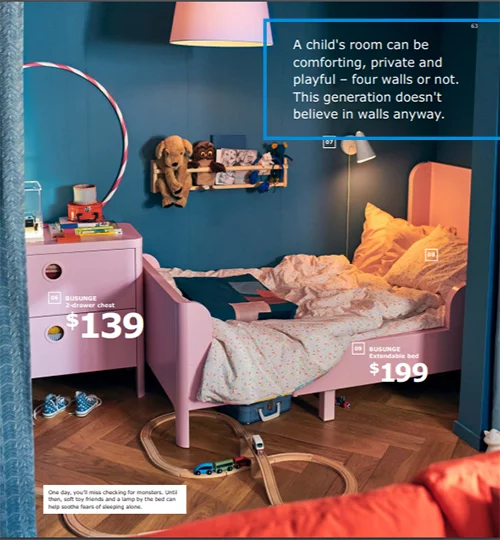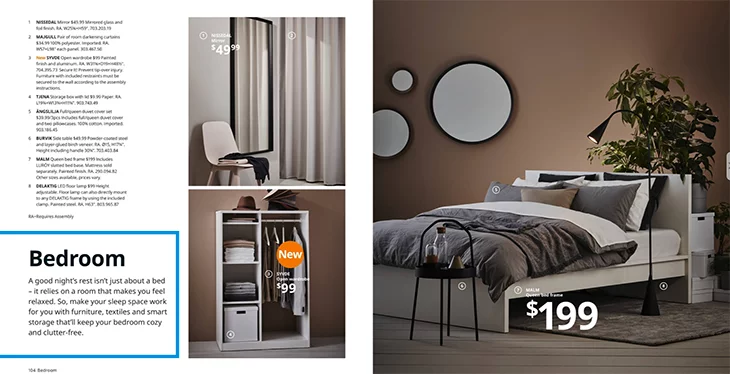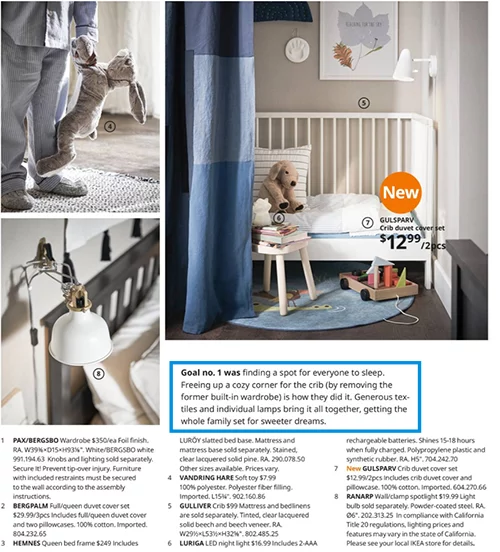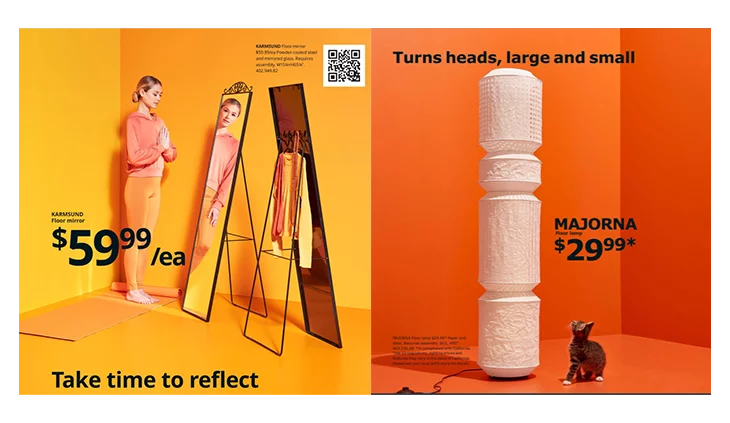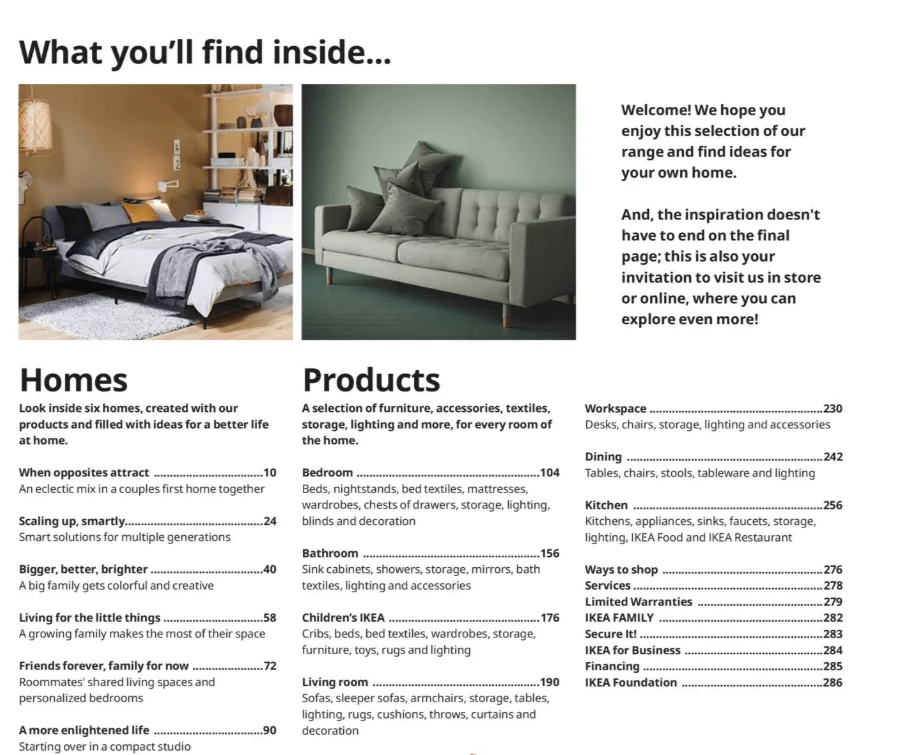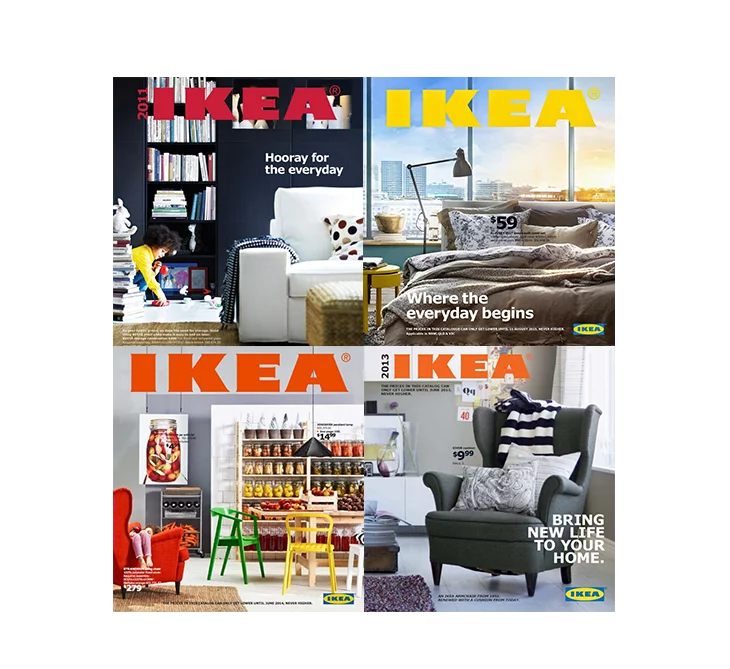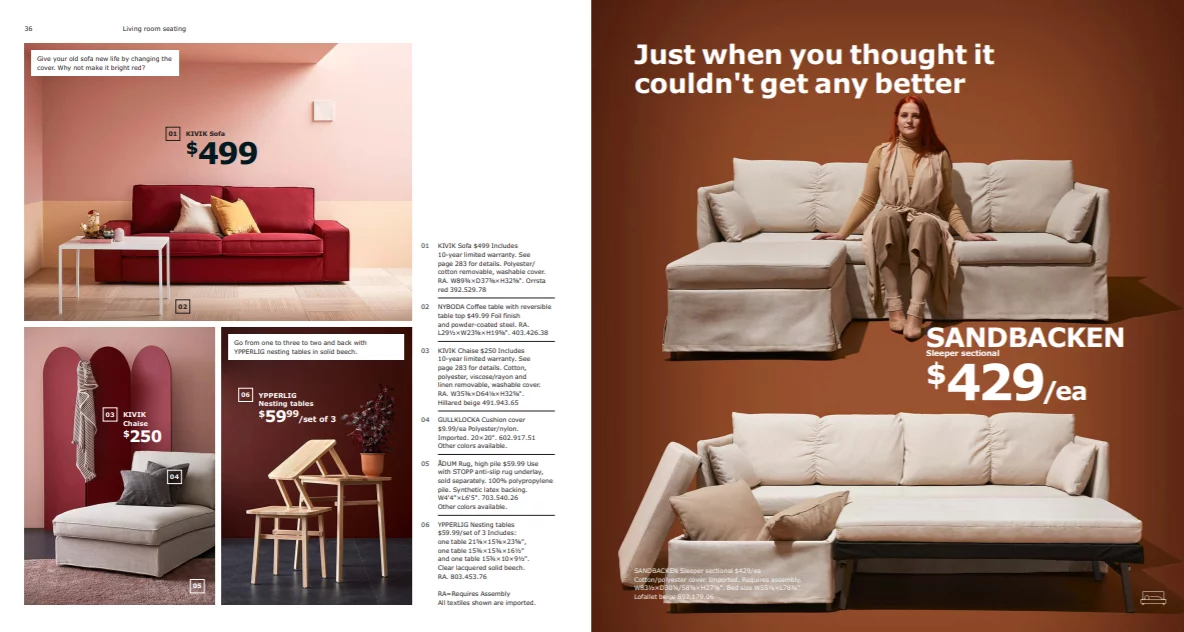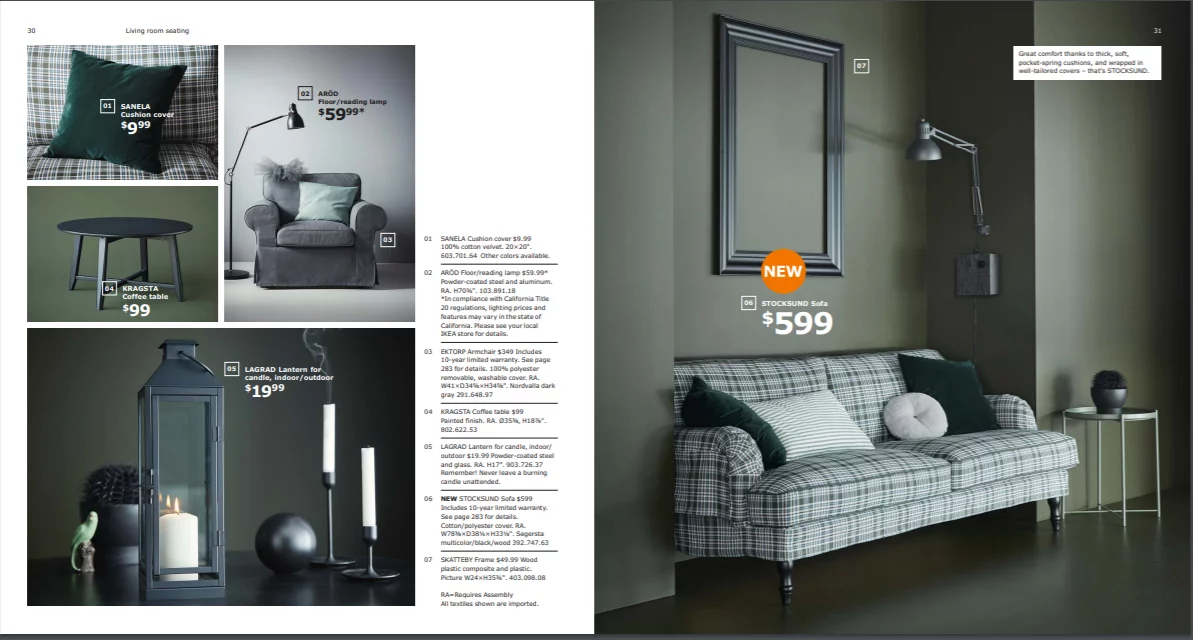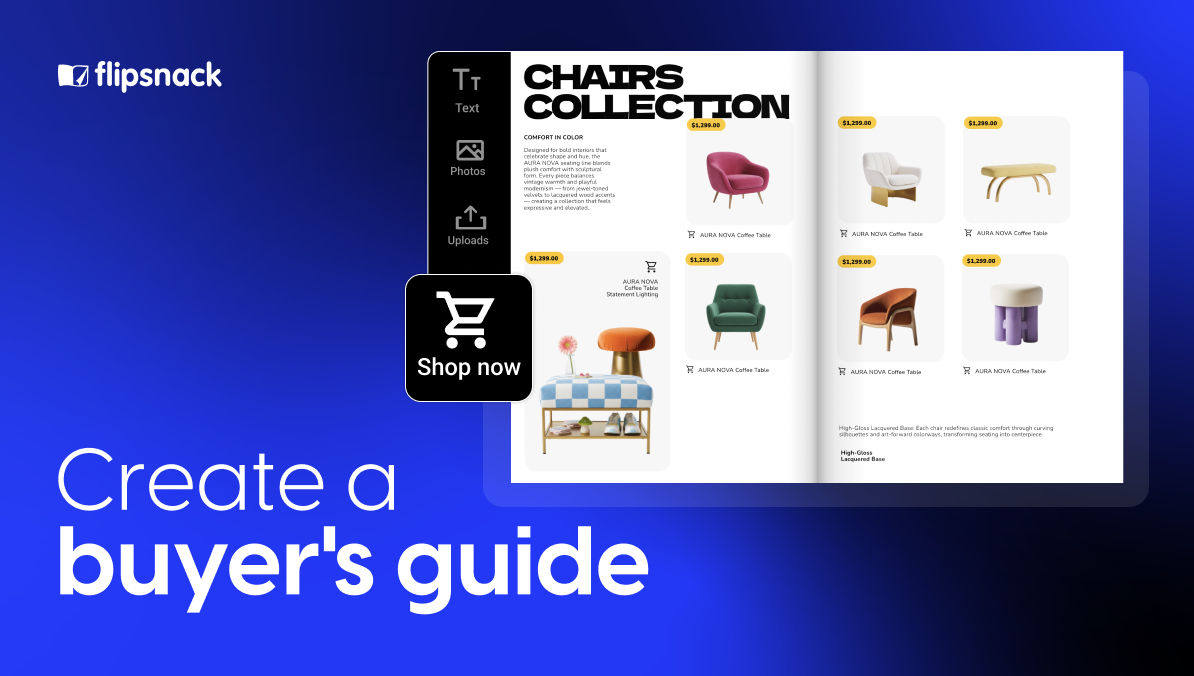How to make a catalog like IKEA
How to make a catalog like IKEA? It’s a question worth pondering upon, given how their finished catalogs look. Let’s think of it this way.
What is the difference between a good song and a great song? A great song stays in your memory long after you heard it. They resist time by offering an experience. The same applies to catalogs.
A notable catalog will not only showcase a product. It will elevate it. You want your material to be professional and unique. But sometimes organizing it feels like walking through a maze. You have to structure it, but how? You have to highlight your products, but which? And again, how do you do it?
When talking about catalog making, IKEA’s name comes to mind. They set a new standard. Not only selling but also telling a story. Catalogs have been around for a while and are still a popular choice for promoting products.
That being said, you don’t want a bland mixture of prices and pictures. If your aim is to make a catalog like IKEA, you need to do more than that.
So, how to make a catalog like IKEA? Let’s see. When it comes to design, IKEA moves away from the bronze age of catalog making and shows us a more artistic, subtle approach. You want to do the same. You want to promote your products differently, better.

To keep things organized, we’ve divided the article into two different but ultimately connected, parts. We will talk about the pillars behind an IKEA catalog, and finally about how to structure your content.
A catalog can be more than just a plain presentation of your products. IKEA understood this, and we’ll find out in a moment just how they do it.
The big three on how to make a catalog like IKEA
As we’ve mentioned, IKEA’s focus is not solely on selling, but also on telling a story. Think of it this way. You’re not merely selling a bed, you are selling the experience of a good night’s sleep. You are presenting a product appealing to human emotion. This should always be the focus of your content. This will help make your message relatable.
By juggling with these notions IKEA invented something new, the so-called “magalogue”. It has the same objective qualities of a catalog but with a twist. In between lies a whimsical combination of storytelling and product showcasing.
This kind of effect is achievable if we keep in mind some basic rules of thumb. Let’s name these rules The Big Three. They will be your map. They will be those guiding principles mentioned earlier.
If it sounds a bit abstract, don’t worry. We will break them down.
1. The main idea
Firstly, you must establish what’s the main idea of your catalog. Find one and stick to it. You want all your products to point at, and enforce this idea. For instance, IKEA’s 2020 issue focused on sleep. Upon studying current trends they figured out that many people struggle with this issue. You can find more about this in their press release. They took something relatable and built on it.
The design of the cover further amplifies this effect. We don’t see a comfortable bed. Instead, we see someone sleeping. You already get a sense of what to expect in the issue. The map is traced, now you have to go start looking.
The main idea is there to help the reader get a sense of the content and it will be foreshadowed in the rest of the catalog. It’s like the trunk of a tree, aimed at supporting the branches of your products. Have this in mind when trying to figure out your catalog and its structure. We will talk about structure later on.
The main idea is also useful for helping you showcase your products. Designing a catalog like IKEA means taking that extra step. And this brings us to our second principle.
2. Storytelling
This is the hallmark of an IKEA catalog. Let’s just take a look at one example:
Long before the written text, stories were told orally. A story helps your audience better remember your message. People enjoy a good tale presented around their products.
Knowing that a chair is made out of bamboo is one thing. A bamboo stem, a remnant of a battle between the Sky and Ocean and from which all life emerges. Knowing this is something else. This is just an example.
Stories offer us a sense of immersion. In the picture above, IKEA makes a statement about this generation to emphasize freedom. The whole issue is dedicated to the idea of diversity. We can all relate to this emotion.
Try to find a story that can encompass your products. Tell the story through images and descriptions and then make it real through prices, material details, size, etc. Your audience still needs to know that this can be theirs.
A story can be fictitious or based on solid research. It doesn’t really matter. In making their catalog, IKEA focused their 2020 issue on sleep. This was their main idea. They further developed upon it using solid research and appeal to emotions. Talking about cuddling, lullabies and bedtime stories, they are presenting you a story.
They stay focused and further fortify their idea. Not by repeating it, that would defeat the purpose. IKEA is showing different instances, different variations on it.
This part will involve some research. Study your clients’ psychology. Understanding their needs and background will give you the best possible insight. Try to be more than just your product. Think of the product as the gateway to your values. Values make you resonate with your audience.
3. Product showcasing
Finally, after you figured out your main idea and the best way to present it, you must showcase your products. Make the most out of them by offering them differently.
Photography and placement are crucial here. Always focus on high-quality images. This will pay out later if you also decide to print your catalog.
IKEA once again strikes at the relatability factor by aligning their products with people and animals. Sort out your best products, or the ones you wish to highlight the most, and add a personal touch. Products are designed for people, so try adding them to your photoshoot. Add a witty remark, a play on different words. Product descriptions work best if the message is catchy, clear and simple.
Think of the relationship between your product and the consumer. After all, objects only work with us in context. IKEA keeps its design simple. The scope isn’t to reinvent the wheel. Your aim, like theirs, is to keep your reader engaged. Focus on composition, quality, original description. Play with different layouts but try to stay consistent throughout.
Make the buying experience smoother with a shopping list
Go a step further and offer your clients a truly immersive experience when browsing through your catalogs. You can easily do this with Flipsnack’s shopping list feature. Nothing says “comfortable buying” better than having all of your items shoppable within the catalog. All you have to do is choose the method in which you want to make your products clickable: a pop-up or a button.
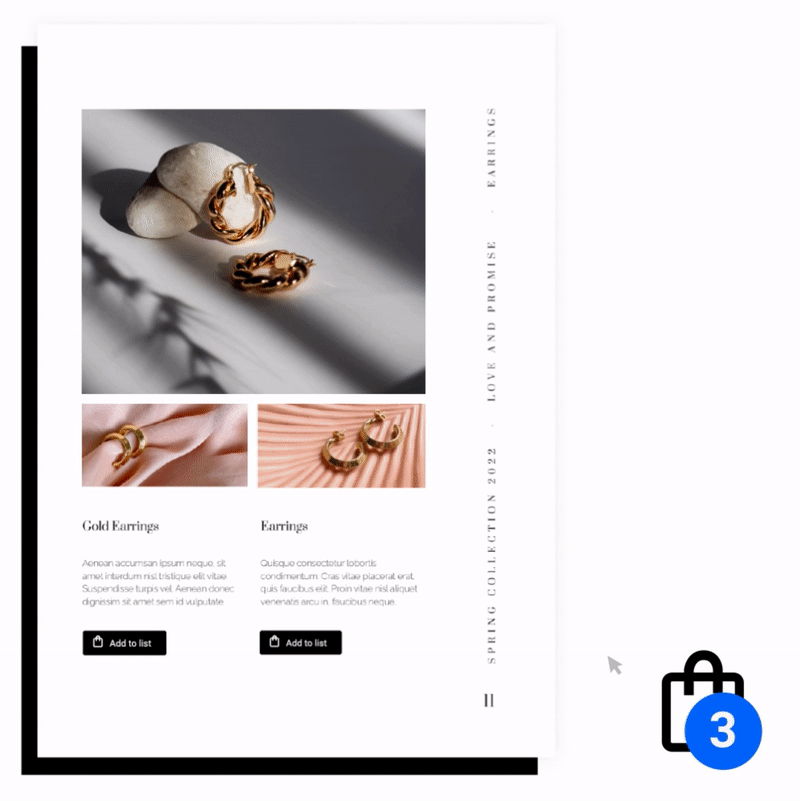
Depending on the product, you can offer more or less information about it, considering how much you want to stretch the layout. Use the pop-up frame, found in the Shopping Area to add more than one picture per product, a title, description and (discount) price. Delight your customers with this shopping list, which they can later on download as a PDF and send it to you via email.
How to make a catalog like IKEA, a summary
To summarize, we’ve talked about the three most significant pillars that go behind making a catalog like IKEA. You need a starting point, the main idea. This will be your guiding system.
Next, you need to dress this idea up. Enter storytelling. Wrap your plan in garments, make it colorful and relatable. Telling a story helps you to engage your target audience in a more personal matter.
Lastly, showcase your products. Feel free to play with different ideas and composition techniques but stay consistent.
Consistency is an integral part of any well-designed catalog. You don’t want your reader to feel lost in translation. You want him focused, engaged and satisfied.
Now you have the main building blocks of a successful catalog. But how do you translate this into your work? How do you organize all this information? The next section will be dedicated to these questions, as we’ll talk about structure.
Structuring your catalog like IKEA
Now that we’ve outlined what goes behind your catalog’s scenes let’s see how to structure it. But before getting to know the how of things, first let’s visit the why.
Why is structuring your catalog important? Rectify that, not important, vital!
Structure brings unity to your content. They help the reader maintain a general sense of direction. An unorganized catalog often leaves the impression of hastiness, of a lack of commitment. Imagine if a library had no structure. You would look for your favorite fantasy book but stumble upon 101 Best Recipes for a Christmas Evening.
The answer to ‘how to make a catalog like IKEA’ rests in good part on composition and structure. Keeping things tidy and neat is an integral part of every successful presentation. If you want to make a catalog like IKEA, you can break your content into two different segments. Take their example, Homes and Products.
The Home section usually nests overall design ideas for your home, bedroom, dining room, etc. The Products page is the applied sciences of the catalog. Here the products are presented more individually. By this point the reader’s attention is caught, now maybe he is interested in actually buying something.
As humans, we work better when we don’t have to fill the gaps ourselves. Having the information presented clearly saves the reader time and energy. Don’t let him guess, tell him exactly what he’ll find and where.
Regardless of your catalog’s size or product quantity, having an organized presentation is an invaluable asset. If you want to make a catalog like IKEA, keep this in mind.
Now let’s get over to the ‘how’ part.
Cover and logo
The cover is the first contact with the reader. It is also the ideal spot to visually represent your main idea. You know the old saying, a picture is worth a thousand words. That is especially true when talking about covers. Their aim is to grab attention.
We see that in designing a catalog, IKEA’s approach is constant throughout its development. They employ people, toys, scenes of a modern family, and their logo. The key is once again to be consistent. We cannot emphasize just how important this principle is. They choose a theme, visually represent it on the cover, and pour it throughout the catalog.
After you’ve established the main idea that will be tackled in this issue, figure out the best way to represent it. Commit The Big Three to memory and start juggling with ideas.
Once again, study your audience. You can tackle with its likings, with their neuralgic spots, with their desires. There is no hard road that you should take. Covers convey meaning, they are a mirror for your message.
Apart from a drastic rebranding, you want to stay consistent with your logo also. You want your brand to be recognized. Blue and yellow almost automatically link to IKEA. They took those colors and added them to their own meaning, meaning which now people translate into household furniture and the like. Now they are looking for a different approach. They recognize the strength of digital media and updated their logo accordingly. By choosing to go for plain white, their new logo now acts as a magnifying glass for their products. If you want to read more about this, check out this article.
Table of contents
This is probably the most straightforward step. Most often than not, this is your best bet for a good start. Begin your process with the table of contents just to have a clear outline of what you want to achieve and present.
Usually you want your table of contents to come right after the cover. You can also think of adding an intermediary page between the two, just to fortify your cover’s message.
If you are opting for a digital catalog, make sure to make the table of contents clickable. You want your reader to have the option to jump right into the middle of things.
Content
It all came down to this. Now your canvas is ready for your products. You will need reliable product data. This includes product tags, prices, descriptions, barcodes, maybe even a hyperlink to a more in-depth look at the product.
Using an online publishing platform like Flipsnack, you can easily cover all of the above. You only need to sign up and try our design editor. Upload your PDF and JPG files, select a size and then introduce your product tags.
There is also the option of creating a catalog from scratch. We continuously try to stay ahead of things. We understand the time is invaluable and to simplify things further, we introduced a catalog automation tool. Now our design editor is even more powerful, so be sure to check it out.

A tip to keep in mind. If you don’t have the brand power of IKEA (and most just don’t), try to establish a sense of urgency. Highlight your offers using different font sizes. Tell your audience how much they could save by adding limited offers, pack discounts, and so on.
Layout
You can choose to display your content on a single, or on a double-page format. Flipsnack’s double page layout feature offers you more flexibility in displaying your images. Instead of cramping a big ensemble in a single page, you can spread it onto two.
This is a similar technique that can be found in painting and photography. The purpose is to show the bigger picture. We all fear to crop our photographs. In the end, it feels like only one pixel remains to tell the story. Sounds familiar? Double page layouts can be your ally.
We’ve talked about 7 tips on writing copy for your catalog in the past. Be sure to check that also.
Lastly, don’t underestimate the power of color and fonts. Aesthetics play a crucial role in any presentation, be it a product catalog or any other thing.
Let’s look at some examples of how color can take the center of the stage:
Choose the right colors depending on what mood you are trying to set. Whatever your artistic velleities may be, make sure to include color in your scenes.
Color helps the reader visualize your message. If you present summer swimming equipment, your best bet would be to go with warm undertones.
IKEA keeps its design simple. In terms of page arrangement, there is a certain minimalist feel to it. Their catalogs never seem crowded. A more detailed description should never go on top of your product. You worked so hard for that photo, you don’t want it to be obstructed by text.
Typography is important, and the right font should be chosen carefully, but ideally you want it as a companion for your photos. Not as a competitor for space. Don’t worry too much about where you place your prices. They rarely are an issue, even if they are right on top of the product.
The main thing is to remain consistent. Use the same fonts, a similar placement, try moving around the same branding guidelines. Sticking to them denotes confidence on your part, and most importantly, it makes your brand recognizable.
To sum things up
Making a catalog like IKEA is no easy feat. Make no mistake about, there is a lot of hard work involved behind the process. But the process is not herculean.
The epicenter of this whole endeavor is set around storytelling. If you manage to find an idea and present it in a manner that makes it relatable, you are halfway there. Add structure and high-quality photos and you’re almost ready.

As we said in the beginning, there is no secret formula for creating the perfect catalog. But we believe that by following the poles we’ve set up in this article, you can make your vision stand out. Following them will also give your future clients a better insight into what your brand stands for.
How to make a catalog like IKEA? You’ll make it with more than prices and chastened objects laying in the background. You will add them to a story. Instill life into them, insufflate a sense of whimsical wonder. That’s what people relate to.
A simple price will tell the value of your product. A story can speak of its worth.
